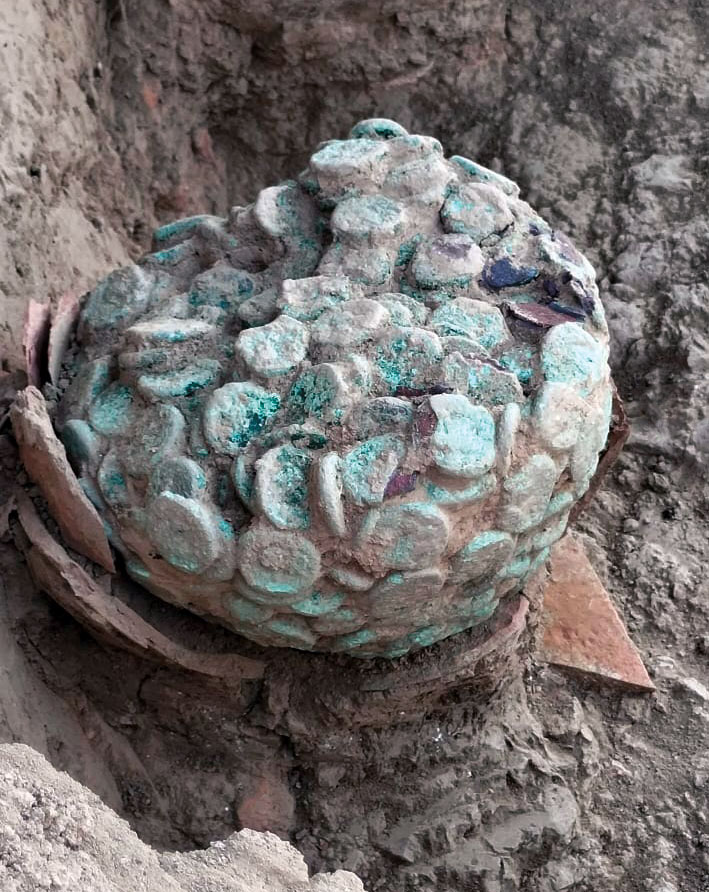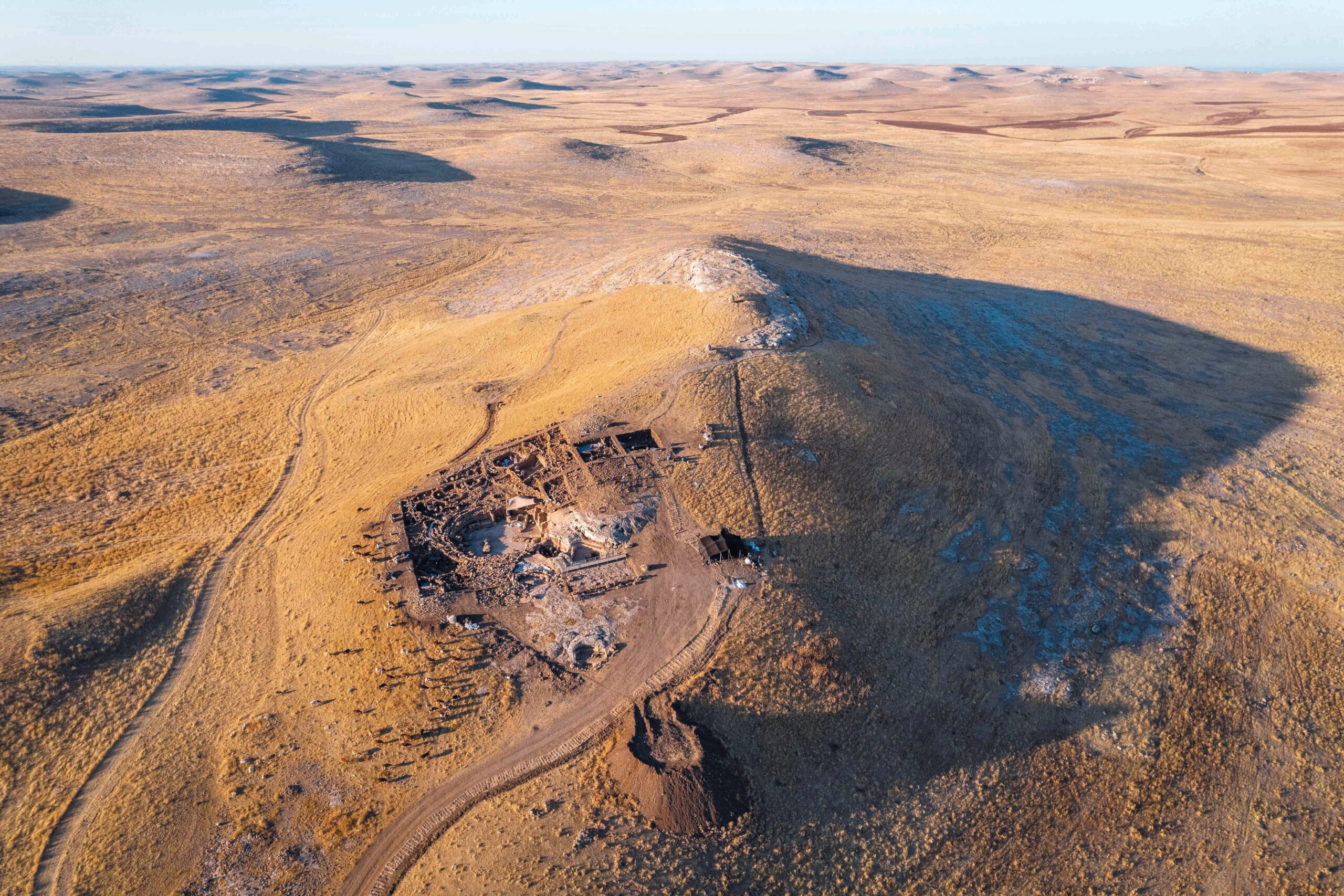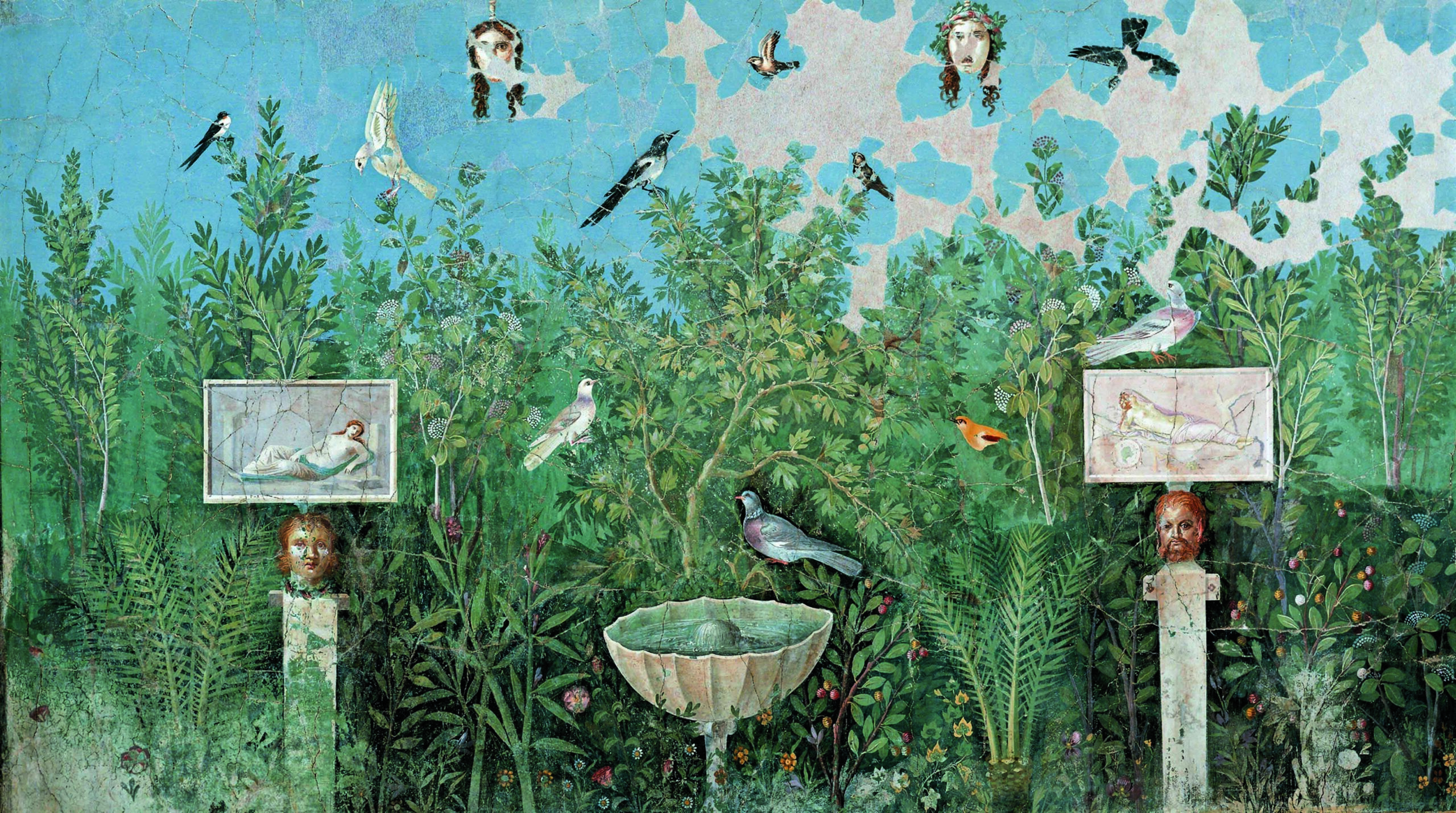

Mohenjo-Daro, located in southeastern Pakistan, is best known as the largest settlement of the Indus civilization, which dominated parts of what are now Pakistan and India 4,500 years ago. However, the site also has a rich Buddhist history, the clearest evidence of which is a huge stupa that sits atop the settlement’s Bronze Age ruins. Recently, workers attempting to preserve parts of the site that were damaged by devastating floods in 2022 spotted a partially broken terracotta pot on the western side of the stupa. Inside, archaeologists found hundreds of ancient copper coins—more than 10 pounds in total—dating to the Kushan Empire (ca. A.D. 50–250). “It’s the first time that such a huge number of coins have been found in one location at Mohenjo-Daro,” says archaeologist Syed Shakir Ali Shah, director of preservation and conservation at the site. During excavations conducted between 1922 and 1931, archaeologists found more than 4,300 coins, but they were scattered across the site. The newly discovered coins, which Shah says are in good condition, have been moved to a laboratory for further examination.











